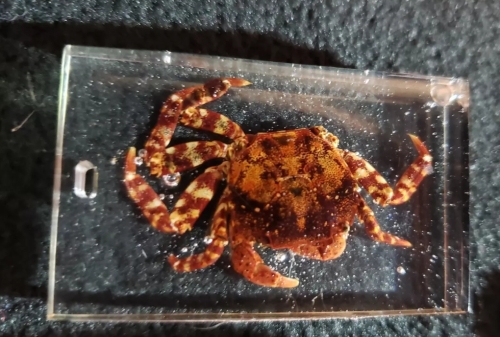In nature, the crab is a very fascinating Marine creature, and its unique form and rich ecological habits have attracted wide attention from scientists and enthusiasts. Although crabs inhabit a variety of habitats, their common characteristics are a pair of strong pincers and a flat body, which can move freely in the sediment or rock crevices. In order to better study and understand these organisms, the preparation process of crab specimens is particularly important.
The preparation of crab specimens usually requires the selection of a suitable sample first. The preservation of specimens helps to show their external characteristics, anatomical structure and ecological adaptability. After catching crabs, they are usually treated immediately to ensure their morphological integrity. First, the captured crabs are washed to remove attached sediment and impurities, and then pickled or mellowed to prevent decay. Common preservative fluids include formaldehyde and alcohol, which can effectively inhibit the growth of bacteria and fungi.
In the process of specimen preparation, parts such as the limbs, pincers and eyes of the crab need to be carefully observed and recorded. The scientists will record information about the crabs' feeding habits, habitat and breeding behavior to provide reference data for future studies. After specimen preparation, the external characteristics of the crab can be displayed to the public through transparent containers for educational and research use. This will not only help students and researchers intuitively understand the biological characteristics of crabs, but also improve the public's awareness of Marine ecological conservation.
In addition, with the development of science and technology, digital technology is playing an increasingly important role in specimen production. Some research institutions are beginning to try to combine three-dimensional models of crabs with traditional specimens.
















